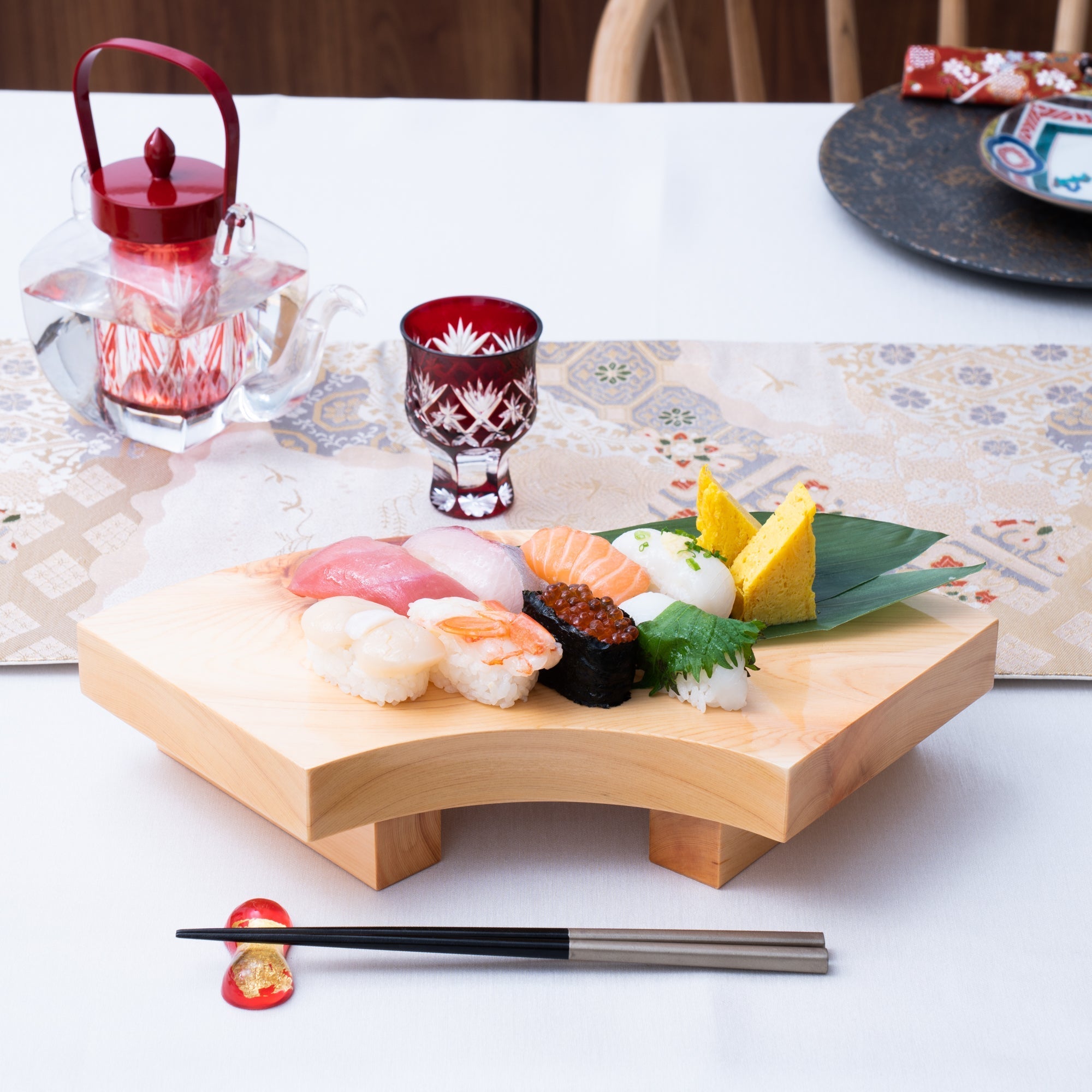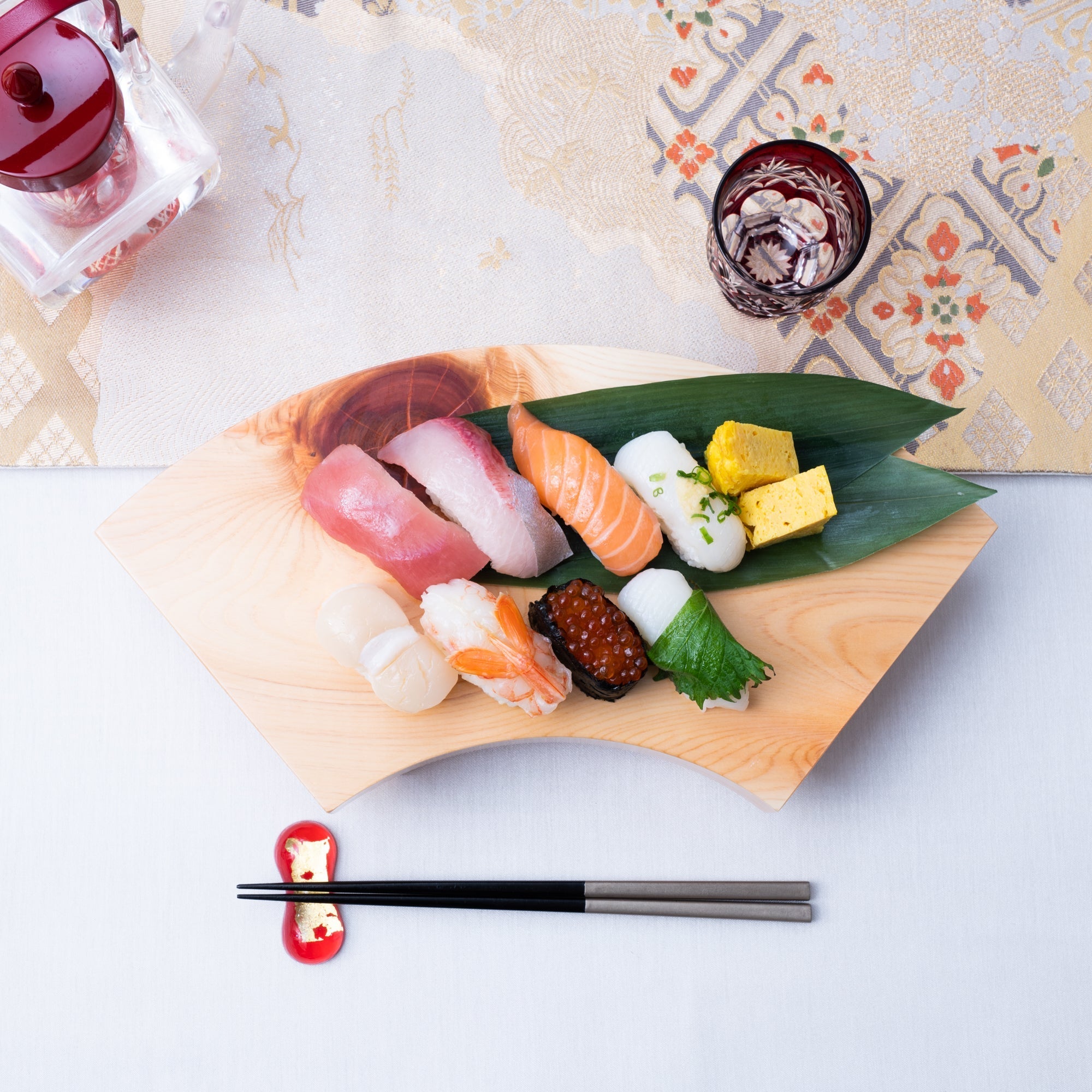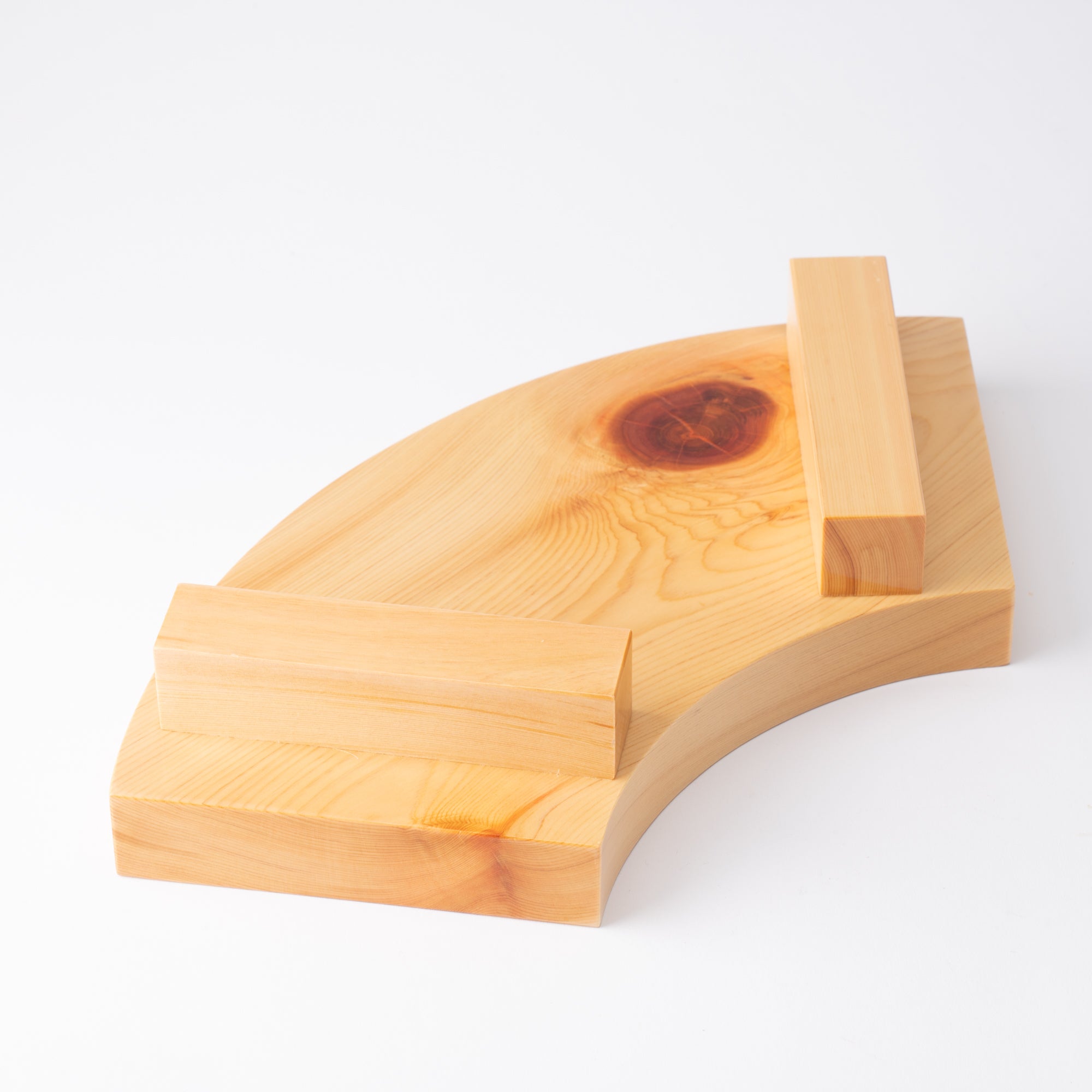












Fan Shaped Platter
Estimated Shipping Widget will be displayed here!
This fan-shaped sushi plate is made of Kiso Hinoki cypress by Miyabi Urushi. The 13.8" size is enough to hold a large portion of sushi for one person. In addition to sushi, it can also be used for sashimi and tempura dishes.
The knot patterns of the wood appear on the surface, creating a bold accent. The height of the plate with its thick board and foot gives it a sense of luxury and makes it stand out on the dining table.
Since the design makes use of natural knots and annual rings, there may be slight unevenness in the design of individual pieces, but it has no practical problem when in use.
The finish brings out the color and grain of the solid Hinoki wood. Hinoki is a material often used for counters and wooden plates in high-end sushi restaurants, and this plate will give your dining table an authentic atmosphere.
DETAILS
| Quantity | 1 |
| Size | L 35 cm (13.8 in) x W 18 cm (7.1 in) x H 6 cm (2.4 in) |
| Material | Wood - Kiso Woodwork |
| Microwave | No |
| Dishwasher | No |
Crafts
In Japan, 70% of the land is covered with forests, and there are said to be as many as 200 species of trees, including coniferous trees such as cedar and cypress, and broad-leaved trees such as zelkova, chestnut, and horse chestnut, that are used for construction and woodworking. Japanese wood crafts are made by making the most of the characteristics of the wood from each production area. For example, bamboo crafts in Kyushu, Japanese cypress products in Gifu, and cedar products in Akita are famous.

How to Care
Choose options













Platters
This collection showcases plates over 31 cm (12.2 in), perfect for placing at the center of the table for shared meals. Whether presenting main dishes or ingredients for a hand-rolled sushi party, these versatile serving plates are ideal for any gathering.



